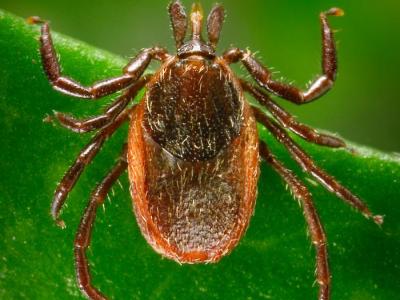Report notes deficiencies of MSF Ebola triage system
The criteria that Doctors without Borders (Medecins Sans Frontieres, or MSF) use in triaging West Africa Ebola patients resulted in more than a third of patients falsely testing positive, and the guidance needs to be revised, a study yesterday in Eurosurveillance concluded.
MSF researchers and local public health officials analyzed data on 433 Ebola patients admitted into MSF's Ebola management center in Kailahun, Sierra Leone, from Jul 1 to Sep 30, 2014. MSF uses two triage categories for suspected patients—"suspect" and "highly suspect"—placing each type of patient into a separate ward.
The investigators found that 276 of patients (64%) were true-positive admissions and 157 (36.3%) were false-positive admissions, meaning they tested positive for the disease when they did not have it and would be exposed to a risk of Ebola infection when placed in a ward with patients who were actually infected.
The positive predictive value for receiving a positive laboratory result after being placed in the highly suspect ward was 76%, and the corresponding negative predictive value was 54%. Sensitivity of the protocol (the proportion of patients with the disease who test positive) was 70%, and specificity (proportion without the disease who test negative) was 61%.
Ultimately, 254 (59%) of admissions were classified as highly suspect, with the remaining 179 (41%) as suspect.
The authors conclude, "The current triage system should be changed. Whenever possible, patients should be accommodated in single compartments pending laboratory confirmation. Furthermore, the initial triage step on whether or not to admit a patient in the first place must be improved.
"What is ultimately needed is a point-of-care EBOV diagnostic test that is reliable, accurate, robust, mobile, affordable, easy to use outside strict biosafety protocols, providing results with quick turnaround time."
Dec 17 Eurosurveillance study
Zika virus infections reported for first time in Honduras
Honduran health officials have reported the country's first two cases of Zika virus infection, adding another nation in the Americas to the growing outbreak, while European officials detail neurologic conditions in infants in Brazil, the hardest-hit country.
Authorities confirmed two cases of Zika infection in the southern department of Valle, near the border with El Salvador, according to a local media report translated and posted yesterday by FluTrackers, an infectious disease news message board.
The patients are receiving medical care for the mosquito-borne disease and are in good condition, the story said.
The European Centre for Disease Prevention and Control (ECDC), in an epidemiologic update today, noted that, in addition to Brazil and Honduras, other nations in the Americas reporting Zika cases are Colombia, El Salvador, Guatemala, Mexico, Panama, Paraguay, Suriname, and Venezuela.
The agency also said that 134 cases of microcephaly (small heads and brains) in Brazilian newborns have been confirmed to be linked to Zika virus infections. The ECDC added that 2,165 cases are still under investigation, while 102 suspected cases have been ruled out.
The ECDC noted in a Dec 10 risk assessment that Brazil has had an estimated 440,000 to 1,300,000 Zika cases, according to health officials, while Colombian officials have reported 578 confirmed and 3,700 suspected cases.
Dec 17 FluTrackers post
Dec 18 ECDC epidemiologic update
Dec 11 CIDRAP News scan on ECDC risk assessment
In related news, a new policy brief by experts at Rice University's Baker Institute for Public Policy said the United States and Mexico must work together to curb outbreaks of mosquito-borne diseases like dengue, chikungunya and West Nile, according to a Rice University press release yesterday.
Dengue, chikungunya, and Zika viruses are all transmitted by Aedes mosquitoes, while West Nile virus is spread via Aedes as well as other mosquito species. Dengue, chikungunya, and West Nile cause an estimated 100,000 illnesses a year in Mexico and the United States, and climate change and other factors might lead to more cases, the release said.
Dec 17 Rice University news release
Dec 16 Baker Institute policy brief
Study finds MERS virus on surfaces in Korean treatment units
A small study in South Korea has determined that most touchable surfaces in MERS treatment units were contaminated by patients and healthcare workers, and that viable virus was shed through respiratory secretions even after patients recovered.
Writing in Clinical Infectious Diseases yesterday, Korean investigators detailed findings on four MERS-CoV (Middle East respiratory syndrome coronavirus) patients in the South Korean outbreak earlier this year.
They found that MERS-CoV viral RNA was detected on environmental surfaces up to 5 days after patients' respiratory samples tested positive for the virus by polymerase chain reaction. The RNA was detected in samples from anterooms, medical devices, and air-ventilating equipment. As well, the virus itself was isolated from bed sheets, bedrails, intravenous fluid hangers, and x-ray equipment.
The researchers were also able to isolate viable virus from three of the patients from 18 to 25 days after symptom onset.
Dec 17 Clin Infect Dis abstract











